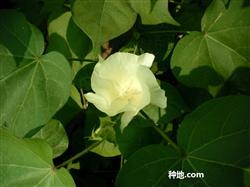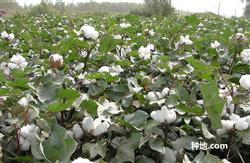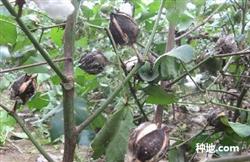* * how to control cotton stem wood sac moth?

** How to control cotton stem cyst moth? Zeuzera coffeeae Nietner Lepidoptera, Leopard moth family. Alias coffee wood moth, coffee leopard moth, leopard wood moth, coffee black dot moth. Distribution in eastern and southern China, in Shanghai, Taiwan, mainly damage cotton and trees. Host cotton, tea, mulberry, jute, castor, coffee, litchi, longan, citrus, pear, persimmon, potato, peach, grape, jujube, etc. Damage characteristics Larvae eat cotton, jute stems, so that the upper part of the plant or all dead; damage mulberry, tea and fruit trees, larvae eat branches xylem, a certain distance to bite out of a dung hole, more along the pith upward eat, resulting in broken branches or withered. Morphological characteristics Adult body length 11-26mm, wing span 30-50mm, male smaller than female, gray body. Female antenna filiform, male base half pinnate, end filiform, all black, covered with white scales. There are 6 blue spots in 2 longitudinal rows on the chest and back, 3 blue longitudinal stripes on each node on the abdomen and back, 1 blue spot on each side, and 3 same spots on the abdomen. The anterior and posterior veins are densely dotted with short blue oblique stripes, and the outer edge veins are spotted. The hind wings are lighter in color. Female hind wing middle part has bigger bluish round spot 1. Egg oval, 1 mm long, beige to tan. Larvae length 20-35mm, red, yellow brown or light reddish brown head, yellow brown to black prothorax shield, near the center of the rear edge there are 4 rows of backward comb-like teeth, abdominal toe hook double sequence ring, black brown buttocks. The pupa is 16- 2 - 7 mm long, brown and lustrous. The dorsal surface of the 2nd-7th abdominal segment has 2 transverse ridges, and the ventral end has 6 pairs of spines. Living habits Shanghai, Yangtze River valley annual 1 generation, Jiangxi, Taiwan and other places annual 2 generations, are larvae in cotton, wood, peach and other trees stem overwinter. Shanghai pupate in the first half of June, emerge in the second half of June, lay eggs on cotton leaves, bore cotton petioles or twigs, damage cotton water supply when larvae grow up, turn to bore thick branches or main stems, damage cotton water supply; tea, mulberry and fruit tree larvae bore upward along pith. The second generation area, Jiangxi pupate in the middle of April to the last half of June, pupal stage 13-37 days, emergence in the middle of May to the middle of July. The adults lie in the daytime and emerge at night. They have phototaxis. They mate and lay eggs soon after emergence. The eggs are laid in pieces in skin slits and holes. The laying period is 1-4 days. The number of eggs per female is 224-1132. The average life span of adults is 43 days, and the egg period is 9-15 days. The larvae gather on the egg mass to feed on the egg shell, climb to the top of the branch after 2 -3 days, and spread with the wind. The larvae bore into the bud axil above the branch tip, and the upper part withered. After 5-7 days, the larvae turned to the thicker branch. When they bore, they first bore in the subcutaneous lateral ring for 1 week, so the upper part mostly died, and then bore upward in the xylem. After maturity, they bore outward and then built a pupal room in the tunnel. When they emerged, the emergence hole extended from the head chest, and the pupal shell remained at the orifice. The 1st generation adult occurs in August and September, and the 2nd generation larva overwinters in the tunnel of the injured branch after autumn. Natural enemies include cocoon wasps and fusarium moniliforme. Control methods (1) cotton field combined with the control of other pests early centralized treatment or burning of cotton stalks to reduce the winter larvae in the stem. (2)when sawdust-like insect droppings are found around the damaged wood models, fruit trees and other host trees, the insect branches should be cut off and burned in time to prevent them from entering the cotton field to lay eggs after emergence. (3)When cotton plants are damaged, they peel the stems and kill the larvae. (4)Tea trees, mulberry trees and fruit trees are cut off in time when they are injured, burned or buried in a concentrated manner, and can be controlled after 1-2 years. (5)At the peak stage of adult development, it is sprayed with 50% parathion EC 2000 times or 10% bromamine EC 1000 times, 20% Juma EC 1500 times, 20% chloramine EC 2000 times, 2.5% Gongfu EC 3000 times, 21% Mishadi EC 3000-4000 times, 30% Taoxiaoling EC 2500 times, 2.5% Uranus EC 1500 times. Click to get mass cotton planting technology Click to get mass grain and oil crop planting technology
- Prev

How can cotton yield increase and disease resistance?
How can cotton yield increase and disease resistance? What's the trick? Through the investigation in some cotton areas, it is found that the cotton farmers who apply nitrogen, phosphorus and potassium compound fertilizer only account for about 45%. Most farmers use ammonium bicarbonate, urea and calcium superphosphate, of which about 15% only use phosphate fertilizer as base fertilizer.
- Next

Why is cotton rotten peach?
Why is cotton rotten peach? How to prevent and cure it? Every autumn harvest, rotten cotton peaches have become a "headache" for the majority of cotton farmers. What should I do? Based on years of experience, the author puts forward "five measures". Cotton farmers might as well give it a try. First, timely control of cotton and rotten peaches, mostly caused by worms on cotton and peaches.
Related
- The first cup of black tea in spring, the flavor and history of tea gardens in Kenya, Africa
- The computer can not only choose potatoes, but also grow tea rice. AI will grow winter oolong tea champion.
- It is not only the inflated tea bitten by insects, but also engraved with the four seasons tea in Beipu.
- The Oriental Beauty Tea Festival in Zhuxian County takes the stage at the weekend to experience the plus-size feast of oil tea.
- & quot; Oriental Beauty Tea & Exploration of Emei in Hsinchu, the hometown of quot;
- The new variety of strawberry "Tainong 1" dessert is the first choice with mellow aroma. Crimson gorgeous
- History of Tea in Taiwan: from Wild Inner Mountain to Export Tea Garden
- Two types of Taiwan Oriental Beauty Black Tea won the British three-Star Award for Childhood Tea Xiang Zhang Jiaqi changed from pilot to champion tea maker.
- Banana species and varieties: the planting history of Taiwan Xianren banana and dwarf banana is long, is banana disease resistant?
- Coffee planting Technology: Qianjie Coffee from Seedling to harvesting

